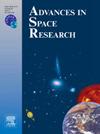Improving LEO short-term orbit prediction using LSTM neural network
IF 2.8
3区 地球科学
Q2 ASTRONOMY & ASTROPHYSICS
引用次数: 0
Abstract
Orbit prediction of low earth orbit (LEO) satellites is of paramount importance for LEO-augmented navigation. Currently, the most widely used approach for satellite orbit prediction in navigation domain is the dynamical propagation method, which necessitates a good understanding of orbital dynamics. However, this method is plagued by the rapid error accumulation as prediction time increases due to our limited knowledge of the complex orbit dynamics. An effective solution to this challenge is employing the machine learning algorithm, which is data-driven and requires no explicit physical knowledge, in orbit prediction of LEO satellites. We focus on improving LEO short-term (less than 120 min) orbit prediction using the long short-term memory (LSTM) neural network. To this end, we have constructed datasets of the entire year 2019 from seven LEO satellites to conduct the experiments. Historical orbit prediction errors, derived from the comparison between the dynamical-propagation-based predicted orbit and external precise orbit, along with multiple satellite status and environment features are trained to forecast future orbit prediction errors, which will subsequently serve as the compensation for improving the dynamical-propagation-based predicted orbit. Our findings reveal that the LSTM model can improve the accuracy of predicted orbit by more than 30 % for most LEO satellites with a maximum percentage around 75 %. Benefiting from the LSTM model, the prediction time for obtaining 5-cm accuracy of predicted orbit can be extended to (41.2, 42.0, 31.2, 37.9, 30.0, 86.3, 108.1) min for GRACE-C/D, Swarm-A/B/C, and Sentinel-3A/3B satellites, respectively. Additionally, generalization tests between different LEO satellites suggest that the LSTM model exhibits a commendable generalization ability when orbit prediction time is less than 30 min. As the prediction time increases, the model trained using datasets from one LEO satellite is more suitable for forecasting orbit prediction errors of multiple LEO satellites with comparable orbital altitude and orbital plane.
基于LSTM神经网络的近地轨道短期预测改进
近地轨道卫星的轨道预测对近地轨道增强导航至关重要。目前,导航领域中应用最广泛的卫星轨道预测方法是动态传播法,该方法需要对轨道动力学有较好的理解。然而,由于对复杂轨道动力学知识的限制,随着预测时间的增加,该方法的误差积累很快。应对这一挑战的有效解决方案是在低轨道卫星的轨道预测中采用数据驱动的机器学习算法,该算法不需要明确的物理知识。我们着重于利用长短期记忆(LSTM)神经网络改进近地轨道短期(小于120分钟)轨道预测。为此,我们构建了7颗低轨道卫星2019年全年的数据集进行实验。通过对基于动态传播的预测轨道与外部精确轨道的比较得出历史轨道预测误差,并结合多种卫星状态和环境特征进行训练,预测未来轨道预测误差,作为对基于动态传播的预测轨道改进的补偿。研究结果表明,LSTM模型对大多数LEO卫星的轨道预测精度可提高30%以上,最高可提高75%左右。利用LSTM模型,GRACE-C/D、Swarm-A/B/C和Sentinel-3A/3B卫星获得5 cm预测轨道精度的预测时间分别延长至(41.2、42.0、31.2、37.9、30.0、86.3、108.1)min。此外,不同LEO卫星间的概化试验表明,LSTM模型在轨道预测时间小于30 min时具有良好的概化能力。随着预测时间的增加,使用一颗LEO卫星数据集训练的模型更适合于预测轨道高度和轨道平面相当的多颗LEO卫星的轨道预测误差。
本文章由计算机程序翻译,如有差异,请以英文原文为准。
求助全文
约1分钟内获得全文
求助全文
来源期刊

Advances in Space Research
地学天文-地球科学综合
CiteScore
5.20
自引率
11.50%
发文量
800
审稿时长
5.8 months
期刊介绍:
The COSPAR publication Advances in Space Research (ASR) is an open journal covering all areas of space research including: space studies of the Earth''s surface, meteorology, climate, the Earth-Moon system, planets and small bodies of the solar system, upper atmospheres, ionospheres and magnetospheres of the Earth and planets including reference atmospheres, space plasmas in the solar system, astrophysics from space, materials sciences in space, fundamental physics in space, space debris, space weather, Earth observations of space phenomena, etc.
NB: Please note that manuscripts related to life sciences as related to space are no more accepted for submission to Advances in Space Research. Such manuscripts should now be submitted to the new COSPAR Journal Life Sciences in Space Research (LSSR).
All submissions are reviewed by two scientists in the field. COSPAR is an interdisciplinary scientific organization concerned with the progress of space research on an international scale. Operating under the rules of ICSU, COSPAR ignores political considerations and considers all questions solely from the scientific viewpoint.
 求助内容:
求助内容: 应助结果提醒方式:
应助结果提醒方式:


